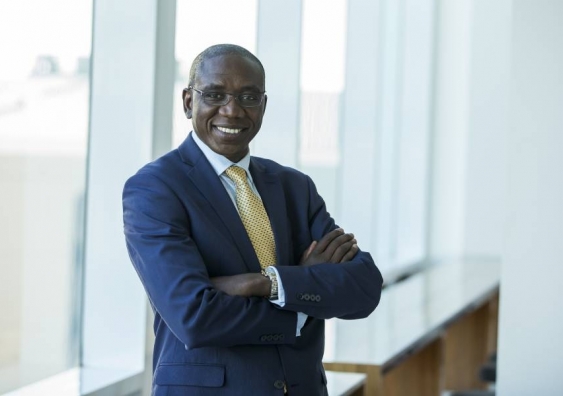Four ways to protect yourself against financial fraud
Establishing a long-term relationship with a financial planner can help to reduce fraud within the community, finds a UNSW Business School study.
Establishing a long-term relationship with a financial planner can help to reduce fraud within the community, finds a UNSW Business School study.

Victoria Ticha
+61 2 9065 1744
v.ticha@unsw.edu.au
°Õ³ó±šĢżĀ has led to a significant crackdown on the education and ethics requirements of financial advisers and theĀ professionās remuneration structure.
Today, there are roughly 40 per cent fewer advisers on theĀ Ā today than before the Royal Commission. And the decreasing number of financial advisers has wide-ranging effects on consumers.
A study conducted by UNSW Business School experts shows theĀ locations with the least number of practising financial advisers have witnessed a noticeable increase in financial crime.
The paper,Ā Unsung Guardians? Communal Fraud Susceptibility and Complaints Following Mass Financial Adviser Attritions, is co-authored by Senior Lecturer Dr Natalie Yoon-na Oh and Professor of Finance Jerry Parwada from the School of Banking & Finance at UNSW Business School, alongside 2021 University Medallist, UNSW Bachelor of Commerce (Honours) graduate Eugene Wang.
The study has important implications for the industry, consumers and policymakers alike.

New educational and ethics requirements have triggered an unprecedented scale of adviser departures, says UNSW Business School's Dr Natalie Yoon-na Oh. Photo: supplied
The study examines whether financial advisers have a lesser-known, broader contribution as disseminators of expertise to their wider communities.
The study shows an 8.8 per cent increase in average fraud rates in local government areas with above-median financial adviser departures over 2018 and 2019.
In contrast, the authors find that regions with proportionately more advisers with membership in professional associations register lower fraud cases.
The researchers argue the benefits of financial advice are often understated and the exposure to professional financial acumen improves public awareness of deceitful financial schemes and reduces communal fraud susceptibility.
Referring to public data byĀ , the study notes adviser numbers have fallen by more than 10,000 since peaking at 28,000 in 2018. But this decline hasnāt yet run its full course, with Adviser Ratings predicting adviser numbers will continue to drop to 15,000 by 2023 and 12,000 in 2026.
Thatās a loss of 16,000 advisers, corresponding to over half of the profession (57 per cent) in just seven years.

The study finds a significant correlation between higher rates of financial fraud and diminishing rates of professional financial advice. Photo: Shutterstock
The unprecedented scale of adviser departures is the result of new educational and ethics requirements introduced in the Australian financial planning industry, explains Dr Oh.
Specifically, theĀ Ā andĀ the introduction of continuousĀ professional and ethics training, with bachelorās degrees becoming the minimum required qualification.
āSince Financial Adviser Standards and Ethics Authority (FASEA) requirements were introduced on 1 January 2019, along with the final report of the 2018 Banking Royal Commission being released at the beginning of 2019, there has been an immediately noticeable drop in advisers, and the workforce peaking in 2018 at over 28,000 registered professionals, and it is expected to halve in the next few years,ā says Dr Oh.
With better practices and new requirements following the Royal Commission, the evidence suggests an increased presence of professional financial advisers will help boost financial literacy in communities, thus helping to deter financial criminals.
āIncreased ethics training among advisers has been shown to reduce crime by strengthening financial acumen within their surrounding populace. This may, in turn, improve an individualās ability to discern whether their adviserās investment recommendations are indeed beneficial for oneself,ā explains Dr Oh.
āMoreover, the inherent requirement for increased cost and time outlays to satisfy FASEA standards may reduce underperforming advisers.
"Hence, FASEA requirements may indirectly heighten industry quality, despite mandates for higher education having no direct evidence of improving adviser performance.ā
Given the current predictions for diminishing advisers, the authors predict financial crime will continue to increase until financial adviser numbers have recovered.Ā

If you unwittingly became a victim of a scam, it is important to immediately get in touch with support services such as IDCARE, says UNSW Business School's Jerry Parwada. Photo: supplied
While most people associate financial advice with making profitable investments, the services extend beyond that, explains Prof. Parwada.
āFinancial advisers often provide a holistic review of clientsā financial and tax affairs when called upon," he says.
"But more importantly, they may tailor their advice considering the individual clientās risk tolerance, such that itās not all about making profit maximising investment choices."
In addition, financial planners can also provide a "steadying, hold-your-hand type of influence on clients,ā he explains.
So clients learn investment habits and knowledge from their advisers, who also act as a technical and emotional safety net for their clients.
People can use a few possible approaches, which are most effective in combination, as no single strategy is fail-proof, suggests Prof. Parwada.
First, Prof. Parwada recommends establishing a long-term relationship with a financial planner.Ā But how can you tell a professional financial advisor from a fraudster?
āThe ASIC website provides ample advice on picking an adviser. In addition, commercial information aggregators such as Adviser Ratings, whose data our project used, also provide useful summary information,ā he says.
Second, he suggests researching and restricting access to only trusted wealth management information sources, especially those provided online ā for example, .
Third, he says it is essential to become familiar with modern information technologies and even navigate the internet, whether formally or informally. In an age of misinformation, fact-checking skills are critical.
āIn that way, one would be prepared to identify scams and approaches from fraudsters,ā explains Prof. Parwada.
āAnd fourth, if an individual unwittingly became a victim of a scam, it is important to immediately get in touch with support services such as IDCARE (another data partner in our project) that are trained and resourced to help,ā he concludes.
The original version of this story was publishedĀ as āāĀ o²ŌĢż.